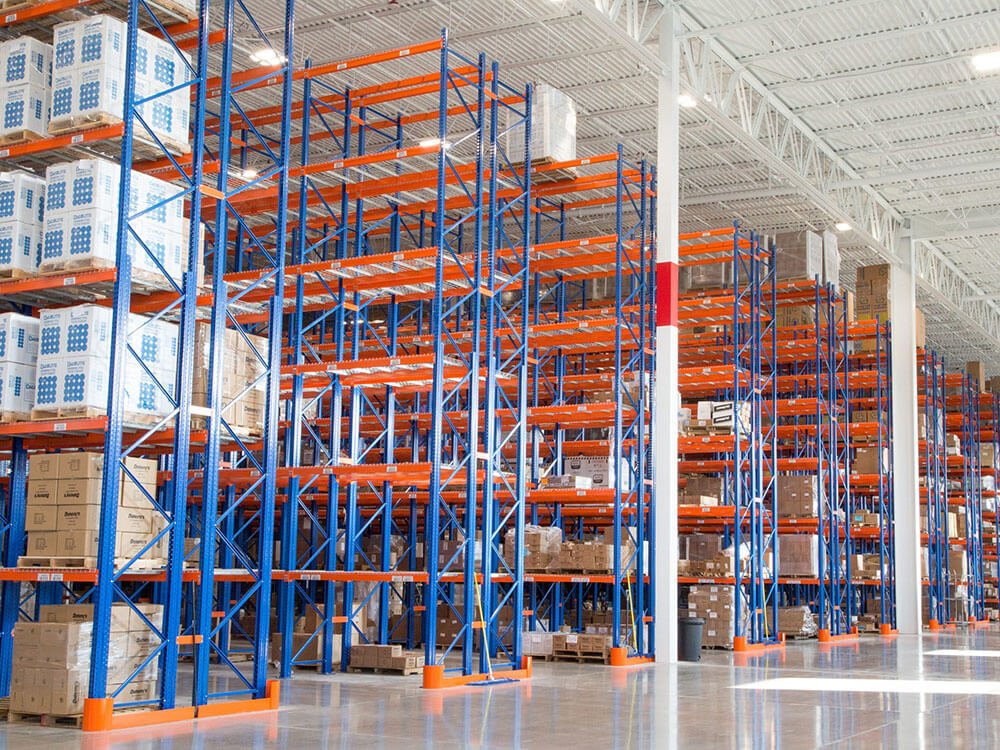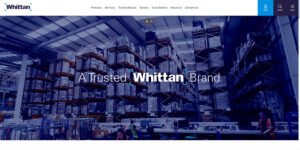In the business world, the warehouse space utilization ratio is a crucial metric that gauges how efficiently you are using your available storage capacity.
A well-optimized warehouse means higher productivity for the operating staff, lower expenses, and, subsequently, improving your company’s customer service and profitability.
Unfortunately, not many warehouse managers invest their time in calculating this straightforward metric and truly optimizing their storage facilities. They seem to accept that there is never enough space.
But if you want to learn more about this concept and improve your warehouse situation, you have come to the right place. This article provides a simple explanation of what warehouse space utilization is, a step-by-step guide on how to calculate the metric, and most importantly, actionable strategies to enhance it for your business.
Understanding Warehouse Space Utilization
Simply speaking, warehouse space utilization is a ratio that measures the performance and optimization of storage facilities. It provides great insights into how well you are utilizing the available area, which impacts both profitability and operational efficiency.
In the following part, you will learn more about how warehouse space utilization is calculated.
Easy Way To Compute Warehouse Space Utilization
Calculating your warehouse space utilization is the first step in building the perfect storage solution for your business.
Mathematically, that figure can be calculated by dividing the usable space by the total available storage space that a warehouse has to offer. It is often expressed as a decimal number or a percentage.
Warehouse Space Utilization = Usable Space / Total Available Space
From the formula, there are two key data points you need to know in order to calculate warehouse space utilization. They are:
- Usable space: This metric refers to the total area that your products occupy. In other words, it equals your inventory cube size, which is the total volume of the goods stored in the warehouse.
- Total available space: This figure is your total warehouse capacity, which equals your warehouse floor area minus non-storage space (like offices and restrooms), and time it with your warehouse’s clear height (the distance from the warehouse floor to the lowest overhead object).
For instance, if you have a warehouse with 5,000 square meters of capacity (total available space) and you are using 4,000 square meters to store your products (usable space), the warehouse space utilization ratio in this case is:
4,000 / 5,000 = 0.80 or 80%
That ratio falls into the ideal range for warehouse space utilization. The following section will explore what the optimal ratio is and how it can benefit your business.
What Is The Ideal Warehouse Space Utilization?
Intuitively, many might think that the ideal utilization ratio of warehouse space is 100%, which means you are making full use of your available storage area. However, this is not the case, as there would be little space for your staff to maneuver.
Dr. James Tompkins shared in his 1998 book “Warehouse Management Handbook” that the ideal range of warehouse space utilization is from 80% to 90%. This optimal range will benefit you in the following ways:
- Easy to move around: As mentioned above, a utilization ratio of 80% gives your warehouse staff enough area to maneuver to handle the products.
- Better warehouse safety: Leaving about 10% to 20% of usable space also ensures better warehouse safety, as it gives the employees extra room to work and thus significantly reduces congestion and accidents that can occur on site.
- Future expansions: Having a cushion of usable space is a wise move to anticipate abrupt demand rises in the future. In such cases, you can easily add more pallets to the remaining usable space to meet such short-term spikes.

Benefits Of Optimizing Warehouse Space
A high warehouse space utilization shows that you are maximizing your inventory capacity. By reducing wasted storage area, you can experience various benefits in terms of productivity, operational efficiency, and profitability.
Here are the top advantages of having a high utilization ratio of warehouse space:
Minimizing Warehousing Expenses
Besides maximizing revenues, reducing expenses is also an important strategy that many businesses strive for. And high warehouse space utilization can help you do just that!
Having an optimal utilization ratio will significantly reduce overhead costs associated with your warehouse. In other words, you are using most of the available space that you paid for.
Enhancing Inventory Management
Optimizing your storage facility also helps improve your inventory management by enhancing the staff’s productivity and their visibility into the goods. As a result, they need less time to handle the required items. Thus, the transit time will be shorter, and the customer’s orders will be fulfilled faster.
Also, an optimized warehouse space can increase the working environment’s safety via a reduction in labor accidents and storage congestion.
Increasing Customer Satisfaction
By efficiently utilizing your storage area, you can stock more goods and offer a wider array of products to customers. This benefit will surely increase customer satisfaction and avoid complaints from stockouts.
Moreover, the ability to fulfill orders on time is another factor that can satisfy your buyers. Obviously, who can be disappointed with their products being delivered promptly?
Driving Higher Profitability
This last advantage is an inevitable outcome of all the benefits above. High warehouse space utilization allows you to stock more goods to anticipate future sales.
It also helps fulfill buyers’ orders faster and increases their satisfaction, which will all turn into higher profitability for your business.
Common Reasons For Low Warehouse Space Utilization
Despite the many wonderful benefits that high warehouse space utilization can bring, it is still not a priority for many companies. Most warehouses don’t even reach the threshold of a 50% ratio, resulting in huge wasted areas that you are paying for.
The following part will point out some of the most common reasons for low warehouse space utilization.
Poor Warehouse Setup
A suboptimal warehouse layout is the top reason for many inventory capacity problems. The low utilization rate is due to the incorrect arrangement of items in the warehouse or the wrong adoption of inventory solutions.
For instance, instead of utilizing the vertical space, you focus only on using up the floor area by narrowing all aisles with the horizontal racking system. This practice not only displays a poor warehouse layout but also reduces your staff’s productivity.
Missing Warehouse Technology
The lack of essential inventory technologies can significantly prevent your company from fully optimizing the warehouse area. The technologies here can be modern warehouse management systems or necessary warehouse equipment that allow you to utilize the vertical space.
Outdated Operating Mindset
Many warehouse managers refuse to improve their inventory situation because they believe there is not enough space to do so. This outdated mindset can lead to prolonged periods of low utilization ratios and many prospective deals being missed.
Furthermore, training and protocols will not be updated properly due to that mindset. As a result, your employees won’t be able to catch up with new storage solutions, which can further decrease your warehouse’s safety.
Ill-prepared for Seasonal Demand Fluctuations
Although hard to predict, seasonal demand changes are inevitable. Without proper preparation, you will likely encounter many issues associated with overstock and warehouse overcapacity.
One common scenario is when you make last-minute orders to replenish your already-stocked inventory. Subsequently, it will negatively affect your warehouse’s efficiency.
10 Actionable Plans To Enhance Warehouse Space Utilization
If you remember the formula to calculate warehouse space utilization, it is clear that to enhance this metric, you will need to maximize your warehouse’s usable space. Here are 10 actionable measures to do just that and help rectify your low utilization figure.
Refining Warehouse Layout
One of the most straightforward strategies is to reexamine your warehouse setup and refine it. You can start by adjusting the aisle widths and door placements to optimize your storage capacity.
Also, don’t forget to ensure a logical product flow by utilizing your warehouse management system to achieve better visibility over the inventory movement. You will be surprised at how greatly it can improve your warehouse layout.

Building Inventory Slotting Strategies
Having a suitable slotting strategy can greatly improve your warehouse space and operational efficiency. Warehouse slotting entails the establishment of strategic storage areas for products with shared characteristics.
There are many slotting strategies out there, depending on what shared characteristics you choose. One of them is the products’ demand, with high-demand items being nearer to the packing area and low-demand goods being in less accessible places.
Another slotting strategy is based on the required equipment and storage type for the goods. For example, while some items need to be stored in cartons and moved around using carts, other products require racks and shelves and must be carried by forklifts.
Utilizing Vertical Space
Instead of relying solely on the floor area, you can consider the valuable real estate of your warehouse’s vertical space. This practice includes the installation of mezzanine floors or the adoption of different storage systems (like pallet racking and shelving).
Going vertical is a clever way to maximize your warehouse space utilization without the need to expand the floor area. However, be mindful to avoid impacts to the sprinklers and other fire protection equipment.
Clearing Up Empty Air Space
Let’s say when you store products on pallets in racks, you will likely notice lots of air space around them, which unnecessarily occupies more areas. In such circumstances, you can simply clear up empty air space by consolidating pallets.
Also, don’t forget to adjust your racks’ configuration to fit the pallets’ height. In most cases, let’s set your rack to 1.2 meters to meet the standard height of pallets. If done correctly, you may have an additional row of rack space in your warehouse.
Upgrading Warehousing Equipment
Another practical way to enhance your warehouse space utilization is to upgrade the equipment, from material handling tools to pallet racks. The latest apparatus, such as turret forklifts, can easily operate in smaller aisle areas, resulting in more racks and storage capacity.
Also, consider using pallet racks with multiple deep units (such as double-deep pallet racks) to unlock more usable space. This pallet rack type gives you one, two, or even three pallets between each aisle.
Merging Storage Locations
Integrating diverse storage areas is a highly effective strategy for optimizing warehouse space utilization, as it facilitates the streamlining of warehouse operations and decreases transit time.
One typical example is the consolidation of your shipping and receiving docks. Additionally, you can contemplate merging multiple storage locations that house identical items.
Auditing Regularly
Consistent warehouse auditing is a prudent procedure for identifying inventory issues and resolving them before they escalate into significant challenges for your organization. An audit can reveal some broken pallet racks that need to be replaced to maximize your warehouse space utilization.
Typically, the auditing procedure entails the comparison between the target and actual Key Performance Indicators (KPIs), such as inventory cost per unit and order completion rate. Certain organizations even go the extra mile by benchmarking the performance of their indices with that of other warehouses to obtain better insights.
Acquiring An Automated Storage and Retrieval System
Consider procuring more sophisticated technologies, such as the Automated Storage and Retrieval System (AS/RS), if your organization’s budget permits.
Thanks to this system’s various practical features, such as horizontal and vertical carousel modules, you can undoubtedly increase the utilization ratio and optimize your warehouse space.

Obtaining A Demand Forecasting System
Besides AS/RS, a demand forecasting system is another wise investment worth your attention. The use of such a system will enable you to take advantage of forthcoming prospects, thanks to its precise predictions of future demands generated from relevant data.
Moreover, you can avoid undesirable circumstances like stockouts or overstockings by utilizing a demand forecasting system. Fortunately, this marvelous instrument is frequently included in most warehouse management systems.
Implementing Cross-Docking Strategy
You will be amazed at how the simple idea behind cross-docking can generate a plethora of benefits for your warehouse performance. This methodology permits the immediate transfer of certain received products to outbound vehicles to fulfill orders.
As a result, cross-docking will decrease the volume of goods that must be stored in your facility, thereby creating extra space for other products.
Summary
In short, warehouse space utilization is the ultimate metric to measure your warehouse performance. By looking at the figure, one can tell if you have done the optimization job well enough or not.
This article has presented the basic knowledge about warehouse space utilization and how to compute this important index. The great benefits of having a high utilization ratio are also explained throughout this writing.
Last but not least, there are many actionable plans that you can employ to boost this figure and optimize your warehouse space.




